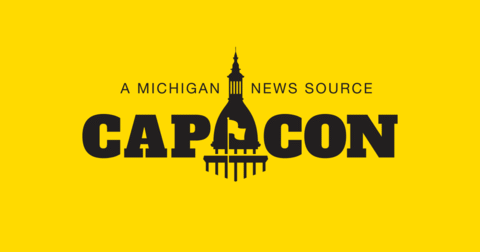University of Michigan: More Staff, Higher Revenue, Higher Pay ... Wants More Money From Taxpayers
U-M president blames rising costs on 'declining state support'
In a letter to President Barack Obama, University of Michigan President Mary Sue Coleman blamed the rising costs at state colleges on “declining state support.”
“Higher education is a public good currently lacking public support,” Coleman wrote in her Dec. 16 letter. “There is no stronger trigger for rising costs at public universities and colleges than declining state support. The University of Michigan and our state’s 14 other public institutions have been ground zero for funding cuts.”
The state is scheduled to give the University of Michigan and its two satellite campuses about $54 million less in 2011-2012 than the previous year, a 15 percent cut. But one fiscal policy expert questions the logic in Coleman’s linking a reduction in state dollars to rising costs.
Michigan’s average compensation for full-time faculty, for example, increased from $122,943 per full-time position in 2005-2006 to $141,753 in 2009-2010, a 15 percent increase over four years.
“To say that higher education costs are increasing because of declining state appropriations confuses revenue with expenses,” said James Hohman, assistant director of the Morey Fiscal Policy Initiativefor the Mackinac Center for Public Policy. “It would be like arguing that losing $20 in the lottery makes groceries cost more. Universities have control over their expenses and can’t blame stalling state appropriations for their ever-increasing costs.”
U-M spokesman Rick Fitzgerald said the college has held down employee compensation costs in the last decade and still offers competitive salaries. Fitzgerald said U-M has made significant cuts in other areas, such as reduced energy consumption and changes in employees’ benefit plans. For U-M’s full response to this article, click here .
The University of Michigan's main campus in Ann Arbor and its satellite campuses in Dearborn and Flint received $361.8 million in 2010-2011 from the state. That was cut to $307.5 million this year.
Although state appropriations have been reduced this year, overall spending at U-M has increased.
According to the University of Michigan budget, the college’s operating expenses increased 24 percent from 2006 to 2010. U-M’s operating expenses increased from $4.25 billion in 2006 to $5.28 billion in 2010. At the same time, student tuition and fees and scholarship allowances increased 28 percent, from $675 million in 2006 to $863 million in 2010.
Some scholars believe there are other causes to tuition hikes than government appropriations.
The Mackinac Center reported in 2010 that the number of administrators and service staff at Michigan’s 15 state universities increased 15 percent while their average compensation grew 13 percent from 2005 to 2009.
As an example, the University of Michigan-Flint campus now has more full time administrators (278) than full time faculty (275).
“Taxpayers need to find out what they want from universities," Hohman said. "Those footing the bill send billions of dollars year after year and are continually asked for more, but promised nothing but a tuition discount in return. Higher education’s constant cost increases point toward a broken system that can’t be fixed by more taxpayer dollars.”
Michigan Capitol Confidential is the news source produced by the Mackinac Center for Public Policy. Michigan Capitol Confidential reports with a free-market news perspective.


 House subcommittee investigates COVID exodus policy held by U-M
House subcommittee investigates COVID exodus policy held by U-M
 Michigan University Hospital, union feud over parking spots
Michigan University Hospital, union feud over parking spots
 U-M demands COVID-positive students leave campus housing
U-M demands COVID-positive students leave campus housing